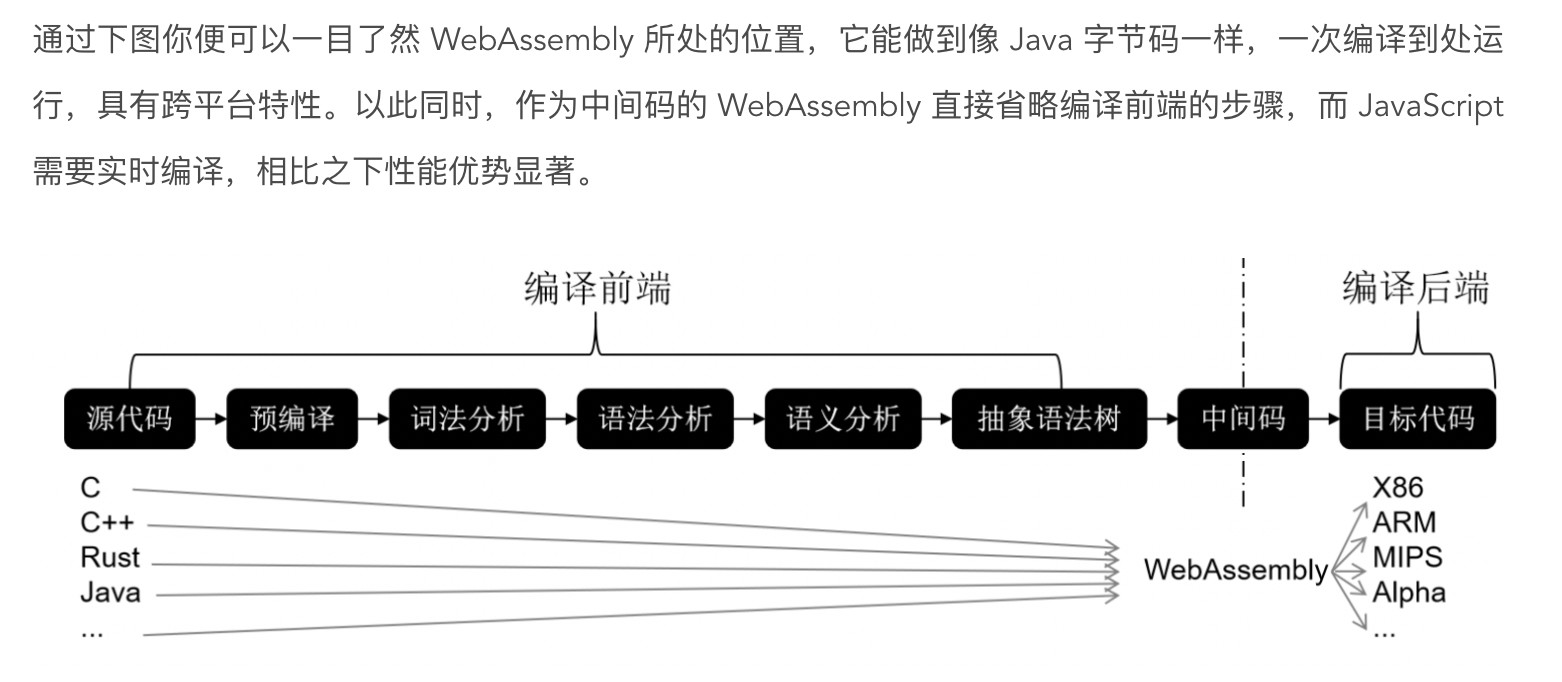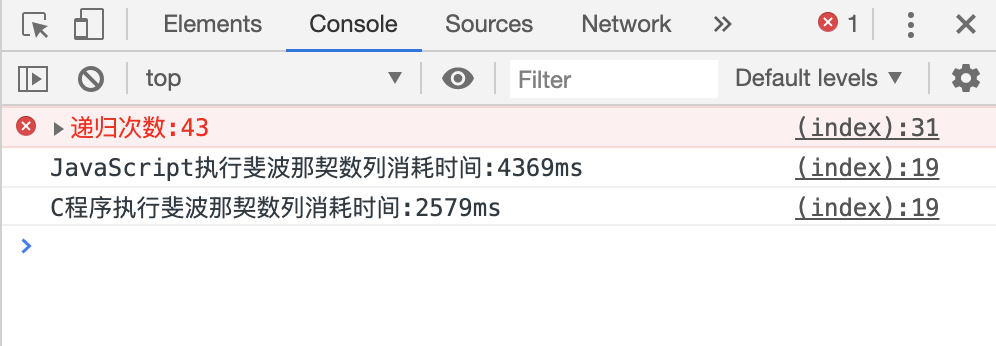在这里就不科普webassemly的作用以及好处了,请自行百度。
那么,怎么通过js的方式在浏览器中运行c程序呢,其中原理如下:

可能另一张图会更详细:

1.安装emscripten
说明文档地址:https://emscripten.org/docs/getting_started/downloads.html
以下步骤为macOs下命令:
step1:克隆项目------------git clone https://github.com/emscripten-core/emsdk.git
step2:进入项目目录--------cd emsdk
step3:安装最新emsdk工具---./emsdk install latest
step4:激活---------------./emsdk activate latest
step5:执行批处理添加环境变量source ./emsdk_env.sh
已经安装好了,看一下版本:

2.写一个c文件(test.c)并转换.wasm
#include <emscripten/emscripten.h> int EMSCRIPTEN_KEEPALIVE add(int a, int b) { return a + b; } int EMSCRIPTEN_KEEPALIVE fibonacci(int n) { if (n <= 1) { return n; } else { return fibonacci(n - 1) + fibonacci(n - 2); } }
注意,红字必须,这是相比常规c文件不同的地方。
转换命令:
emcc test.c -Os -s WASM=1 -s SIDE_MODULE=1 -o test.wasm
然后你就在相同目录下得到了一个test.wasm文件。
3.通过js引入.wasm并执行其中函数
这里我封装了一个引入.wasm文件的工具函数,代码如下:
const importObj = { global: {}, env: { 'memory': new WebAssembly.Memory({initial: 256, maximum: 256}), '__memory_base': 0, 'tableBase': 0, 'table': new WebAssembly.Table({initial: 10, element: 'anyfunc'}), abort:alert } }; export async function addModule(url,callback){ fetch(url).then(response => response.arrayBuffer() ).then(bytes => WebAssembly.instantiate(bytes,importObj)).then(results => { var instance = results.instance; var module = instance.exports; callback(module); }); }
index.html:
<!DOCTYPE html> <html lang="en"> <head> <meta charset="UTF-8"> <meta name="viewport" content="width=device-width, initial-scale=1.0"> <meta http-equiv="X-UA-Compatible" content="ie=edge"> <title>WebAssemblyLearning</title> </head> <body> </body> <script type="module"> import {addModule} from './utils/wasm.js'; var num = 42; function getDuring(func,type){ const start = Date.now(); func(num); console.log(type +'执行斐波那契数列消耗时间:' +(Date.now() - start) + 'ms '); }; addModule('./add.wasm',function(module){ getDuring(module._fibonacci,'C程序'); }); function fibonacci(n) { if (n <= 1) { return n; } else { return fibonacci(n - 1) + fibonacci(n - 2); }; }; console.error('递归次数:'+ num); getDuring(fibonacci,'JavaScript') </script> </html>
我们看到,上面通过两种不同的方式执行了一个递归次数为42的斐波那契数列求和函数,对比一下两者的性能:



所以对于追求性能的web程序来说,webassemly将是一个很好的选择。